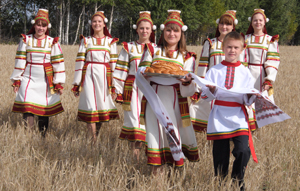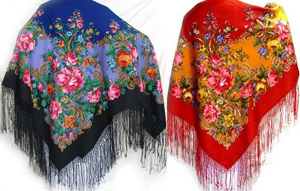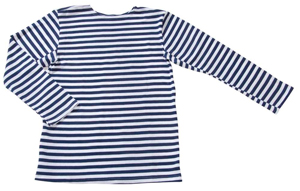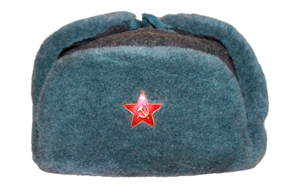|
||||||
MADE IN RUSSIA |
||||||
SHOPPING CART
|
||||||
Russian clothing
|
Russian clothing from the earliest times were made of natural fabrics - linen, cotton, and woolen cloth from sheep's wool or hemp canvas. Painted them with natural paints. In most regions of Russia the most common was red. In richer families wore clothes made of expensive imported fabrics such as silk. In addition to fabrics used fur, sheepskin and leather. For warm clothing were also used a piece of yarn from sheep and goat wool. Sections with Russian clothing, You can choose to order something from these categories, or you can write us your suggestions: Very ornate was the folk costume of Russia. The pattern on the fabric and embroidery could do gold or silver thread, trimmed it with beads, precious stones or metal lace. 
Until the 18th century and the peasants and the nobles dressed the same, the differences were only in the richness of fabrics and finishes. Peter the great forbade the nobles to wear people's clothes, and from this time it remained only among the common people. In the villages traditional Russian costume was common in the early 20th century, however wore it only on holidays. Russian national costume became less common after Peter I in 1699 forbade the wearing of national costume for all except peasants, monks, priests, and deacons. Was initially introduced Hungarian dress, and then the upper-Saxon and French, camisole and underwear — German. Women had to wear the German dress. From all entering the city in the Russian dress and beard were taking toll: 40 cents with foot and 2 rubles with a horse. 
The national Russian women's clothing causes the first Association is a long red sundress or sleeveless dress casual. A sundress girl wore the shirt, preferably white, embroidered, fringe, pearls. Over the dress tied wide waistband, black, red, sometimes mixed, - strict limits here. Also set with apron. The Russian national men's clothing is undoubtedly lower shirt as the main attribute, and after shoes, boots, jackets, teplyaki, shoshoni, spadki, Volosyanka village, and so on. Not to be missed an important point – the differences in the cut, the pattern, the colors of clothing depended on the geographical location, the influence of foreigners, their culture, climatic conditions, level of development (material and cultural). Given these factors, are characteristic of Russian national clothes across regions and periods. If You want to buy paloposki a handkerchief, a vest, a cap with earflaps, boots, or other Russian national clothes, send Your order by e-mail.
|
|||||
|
|
|||||
| ||||||
Copyright © MADE IN RUSSIA www.made-in-russia.name 2016. All rights reserved. |
Created by: Zhulay.ru |
|||||

















